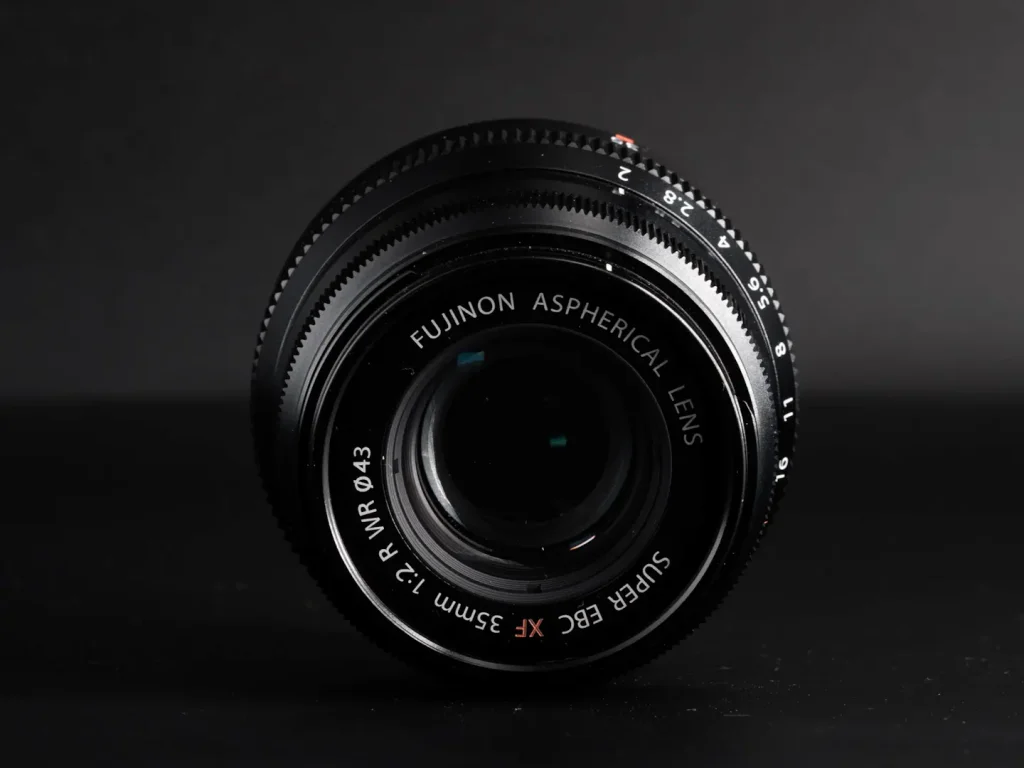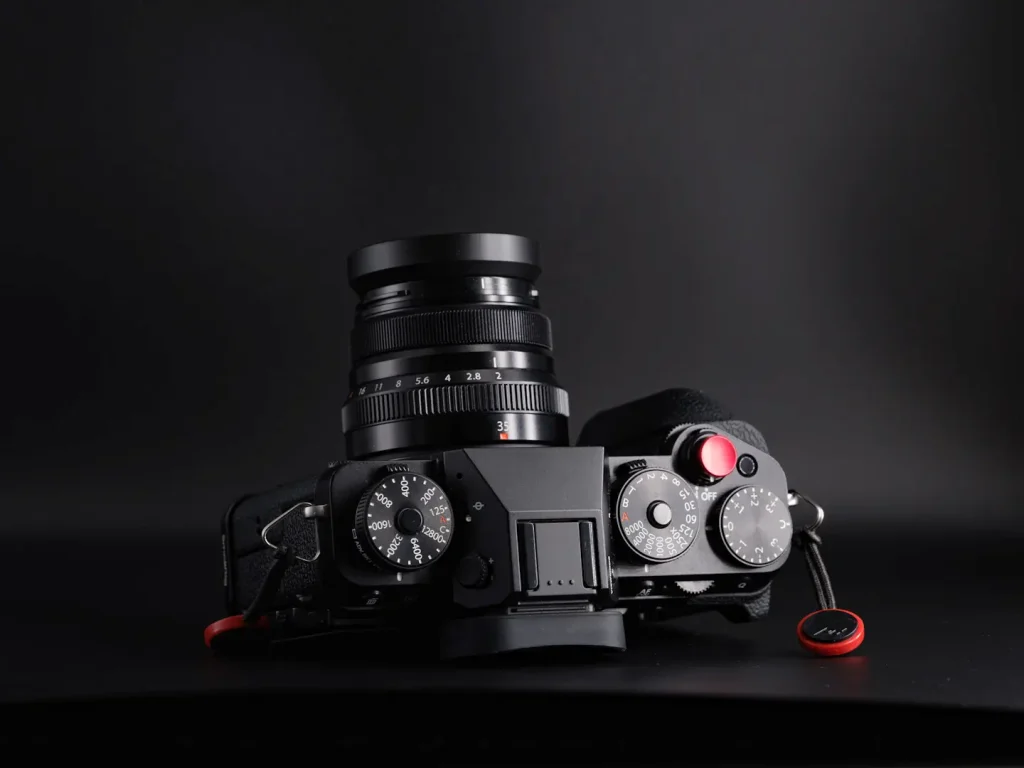Is the Fuji 35mm f2 really the best bang-for-your-buck standard Fuji prime in 2025? On paper, it looks like the obvious choice compared to the more expensive 33mm f1.4 WR and the original 35mm f1.4 — but Fuji shooters know things aren’t always that simple. At 23mm, for example, I would actually recommend skipping straight to the premium 23mm f1.4 WR if it’s within budget, because the f2 version simply isn’t close. So does the 35mm f2 suffer the same fate, or does it genuinely stand out as the smarter value buy?
Disclosure: This article contains affiliate links. If you buy through these links, I may earn a small commission at no extra cost to you. As an Amazon Associate I earn from qualifying purchases.
TL;DR — Should you buy the Fujifilm XF 35mm f/2?
✅ Compact, weather-sealed, fast autofocus, and sharp wide open — the XF 35mm f/2 is the best value standard prime for most Fuji shooters.
💰 At $449, it costs $450 less than the XF 33mm f/1.4 WR ($899) while delivering ~90% of the performance in a smaller, lighter package.
👉 Unless you specifically need maximum low-light ability and background blur, the XF 35mm f/2 is the smarter choice.
Fujifilm XF 35mm f/2 R WR — Specifications
| Mount | Fujifilm X |
|---|---|
| Focal length | 35 mm (53 mm equivalent on APS-C) |
| Maximum / minimum aperture | f/2 – f/16 |
| Optical design | 9 elements in 6 groups (including 2 aspherical) |
| Diaphragm | 9 rounded blades |
| Focus drive | Stepping motor, internal focusing |
| Image stabilisation | None |
| Minimum focus distance | 0.35 m / 13.8 in |
| Maximum magnification | 0.135× (approx.) |
| Filter thread | Ø43 mm |
| Dimensions (Ø × L) | ≈ 60 mm × 45.9 mm |
| Weight | ≈ 170 g |
| Weather resistance | Yes (WR, rated to −10 °C) |
| Included accessories | Front/rear caps, round hood (vented metal hood optional) |
| Finish options | Black or Silver |

Pros
- Small, light, fully weather-sealed
- Fast, quiet autofocus
- Sharp at f/2 with clean contrast
- Excellent price-to-performance
Cons
- Less shallow depth of field vs f/1.4 options
- Focus-by-wire feel
- Small round hood offers limited protection
- Cat’s-eye bokeh toward edges
Build & Handling
When I put the XF 35mm f2 on my X-T5 it feels diminutive, making the whole package small, light, and discreet. It balances well on the X-T5, smaller bodies, and feels every bit the perfect pairing with the X-Pro series. Despite the size and weight, it doesn’t feel cheap — there’s a density to it that feels reassuring, not like you’ve cheaped out and stuck a plastic fantastic on your camera.
The lens naturally tapers down to its tiny 43mm filter thread, but the aperture ring is large enough to be comfortably usable — more so than the one on the X100VI. It’s nicely damped with just enough of a click between stops to give you instinctive haptic feedback. The focus ring offers less resistance than I’d like and, as with all focus-by-wire lenses, the experience is “ok but not great.”


One of the main reasons I chose Fuji as my everyday and travel system was the existence of this range of compact, weather-sealed f2 lenses. At the time, nothing else offered such a balance of size, build, and sealing. Living in Southeast Asia where the heavens can open in seconds and humidity often sits at 90%, weather sealing isn’t optional — it’s essential. I’ve had lenses damaged here by moisture and mold, and the knock-on effect on resale value was painful. That’s why weather sealing and dry cabinets are non-negotiables for me — and a big reason why I highlight these lenses in my best lenses for the Fuji X-T5.
In the POV video below you can see me shooting the Fuji XF 35mm f2 around a rainy Coventry in the UK. It gives you a chance to see how the lens works in practise and the shots I got with it in just a morning of street photography.

Compared to the original 35mm f1.4 (which I owned), the f2 feels more modern in design, if not quite as solid. It focuses internally unlike the older lens. Next to the newer 33mm f1.4 WR (which I also own), it’s substantially smaller and not as solid either — but if you value portability for travel photography and discretion for street shooting, the combination of size, build quality, and weather resistance is hard to beat. The 35mm f2 lens is supplied with a tiny lens hood in order to keep the size down but it doesnt offer much protection.

Autofocus & Performance
The AF on the XF 35mm f2 is substantially quicker than the original 35mm f1.4. In street use during the day it’s quick and confident, with none of the hesitation and hunting that older generation Fuji lenses were notorious for. Compared with the older 35mm f1.4, where focusing was both hesitant and noisy, the 35mm f2 is fast and silent.

Focusing from near to far happens with no fuss and very little noise — quiet enough that I’d happily use it in discreet street work or casual family moments. When I shot a street photography project in Coventry last year, the autofocus was good enough that I never even thought about it. It locked onto subjects quickly, tracked reliably, and didn’t miss focus in any meaningful way.
The same has been true when I’ve used it for general family and travel photography. It easily keeps up with my 9-year-old daughter and her cousins running around, which is always a good test of AF reliability.
At night, the lens also performs admirably. AF does slow slightly in very low light, but it’s still quick enough for general use. The f2 aperture gives it decent capability in dim conditions, though it won’t quite match the brighter 1.4 lenses when the light really drops.
I’ll be writing a more detailed comparison between the 35mm f2 and the 33mm f1.4 WR soon, but for now I can confidently say autofocus speed between the two isn’t a deciding factor for photography. If you need fast, reliable focusing, the 35mm f2 delivers. The only lens you can safely rule out from your research on this front is the original 35mm f1.4.
Image Quality
Wide open at f2, the XF 35mm f2 delivers excellent sharpness. In fact, it’s noticeably sharper than the older 35mm f1.4 wide open, and still sharper even when that lens is stopped down to f2 in the centre of the frame. Corner sharpness does drop slightly, but honestly, if you’re shooting wide open at f2, you’re probably isolating a subject — and nobody’s placing their subject in the corner anyway. The takeaway: you can shoot this lens wide open with confidence.


The bokeh is well-behaved, smooth, and fairly uniform thanks to its 9-blade aperture. There’s a touch of cat’s-eye effect (flattened bokeh balls) towards the edges, but overall, it’s better than you’d expect for a compact f2 prime. In fact, subject separation can look surprisingly close to the faster f1.4 lenses if you control your subject-to-background distance properly.
Flare and chromatic aberrations are well controlled, even with the modest lens hood. Stop down and you’re rewarded with attractive sunstars thanks to those nine blades. Straight out of camera, images have strong contrast and pop without needing extra work in post.

If you don’t often shoot at night, f2 is more than fast enough for subject isolation and general low light use. It may not deliver the same dreamy rendering as the f1.4 options, but it gets impressively close — and with far less compromise in size, weight, and practicality.
Fujifilm 35mm f/2 vs 33mm f/1.4 WR vs 35mm f/1.4 — Quick Comparison
| Lens | Pros | Cons |
|---|---|---|
| XF 35mm f/2 WR |
|
|
| XF 33mm f/1.4 WR |
|
|
| XF 35mm f/1.4 |
|
|
Related reading: XF 33mm f/1.4 WR Review • XF 35mm f/1.4 Review
Value Price Proposition
At $449, the XF 35mm f2 R WR comes in at $450 cheaper than the premium XF 33mm f1.4 WR ($899) and is also substantially less than the older XF 35mm f1.4 ($649). For me, that immediately rules out the original 35mm f1.4 — it simply doesn’t offer enough for the price today.
The real decision is between the 35mm f2 and the 33mm f1.4 WR. If you don’t need the extreme low-light ability and ultimate image quality of the 33mm, the 35mm f2 gives you sharpness, clean rendering, fast autofocus, weather-sealed reliability, and compact portability at half the cost.
Even though I own the 33mm f1.4 WR, I’ll admit that for most Fuji users the 35mm f2 is the smarter choice. It punches far above its price point and, out of all the compact Fujicron lenses, it’s the one that narrows the gap to the premium option the most.
👉 My recommendation: Unless you specifically need the ultimate performance of the 33mm f1.4 WR, get the 35mm f2.
Buy the Fujifilm XF 35mm f/2 R WR
If you decide this is the right lens for your kit, you can grab it here:
✅ Check Price on AmazonAs an Amazon Associate I earn from qualifying purchases — it helps support the site at no extra cost to you.
Conclusion
So, is the Fujifilm XF 35mm f2 the best value standard prime for Fuji shooters? In my view, yes. It delivers sharp images wide open, focuses quickly and silently, and comes in a compact, weather-sealed package that feels right at home on both X-T and X-Pro bodies.
At $449, it’s not only far cheaper than the $899 XF 33mm f1.4 WR, but in real-world use the performance gap is much smaller than the price difference suggests. The 35mm f2 gives you enough speed for low-light shooting, subject isolation, and reliable performance in all conditions.
If you’re chasing ultimate image quality, low light performance and maximum background blur, the 33mm f1.4 WR is the lens to go for. But for most photographers — especially those who value portability, discretion, and price-to-performance — the XF 35mm f2 is the obvious choice. It’s the lens I’d recommend to the majority of Fuji shooters looking for a standard prime. The money you save by choosing this lens over the 33mm f1.4 WR could easily pay for a trip that will yield more memorable photos than the upgrade ever would. Save the cash — and you can thank me later.
👉 Final word: The 35mm f2 isn’t a compromise. It’s a lens that makes complete sense — the smartest buy in Fujifilm’s standard prime lineup.
Fujifilm XF 35mm f/2 R WR — FAQ
Is the Fujifilm XF 35mm f2 good for street photography?
Yes. Its compact size, discreet profile, and silent autofocus make it one of the best lenses in Fuji’s lineup for street shooting. It balances well on both X-T and X-Pro bodies, and its weather sealing means you can rely on it in unpredictable conditions.
How does the XF 35mm f2 compare to the XF 35mm f1.4?
The older 35mm f1.4 has more character in rendering and slightly creamier bokeh, but it’s slower, noisier, and not weather sealed. The 35mm f2 is sharper wide open, faster to focus, and far more practical for everyday and travel photography.
Is the XF 35mm f2 worth it compared to the XF 33mm f1.4 WR?
If you need ultimate low-light performance and maximum background separation, the 33mm f1.4 WR is better — but it’s more than double the price and size. For most photographers, the 35mm f2 offers 90% of the performance at half the cost, making it the smarter buy.
Does the XF 35mm f2 work well for video?
It performs well for casual video thanks to fast, quiet autofocus and compact size. However, like most Fuji primes, it does exhibit focus breathing, so dedicated videographers may prefer other options.
Is the Fujifilm XF 35mm f2 weather sealed?
Yes. It is fully weather resistant and rated for use down to −10 °C, making it an excellent choice for travel, outdoor, and unpredictable climates.

